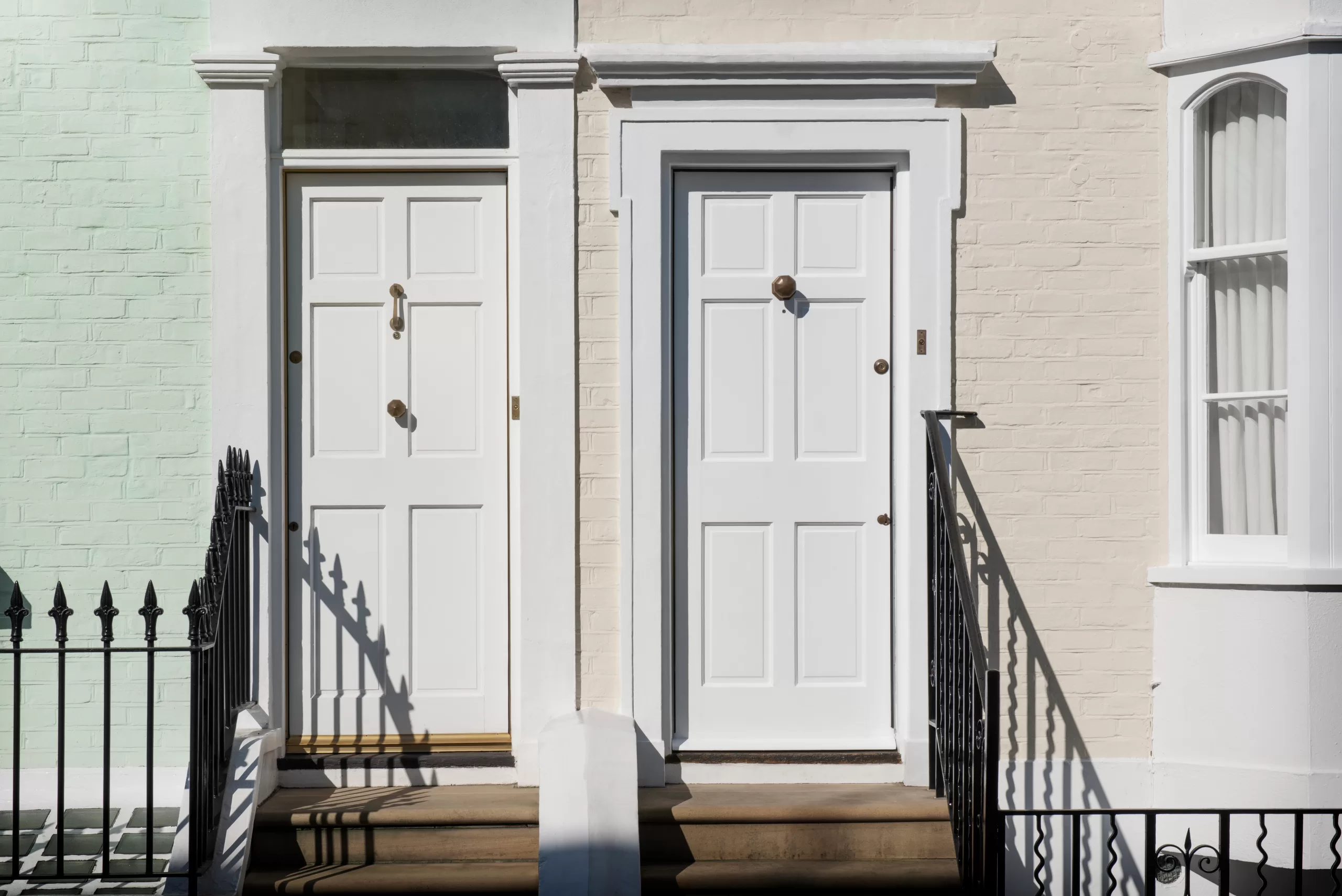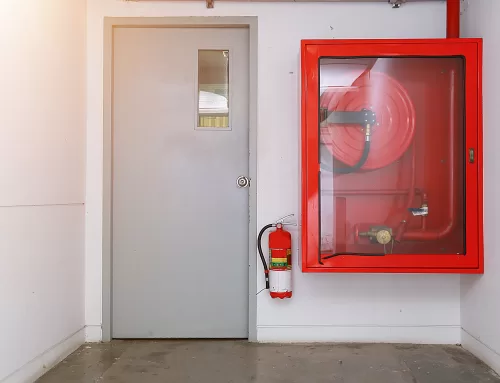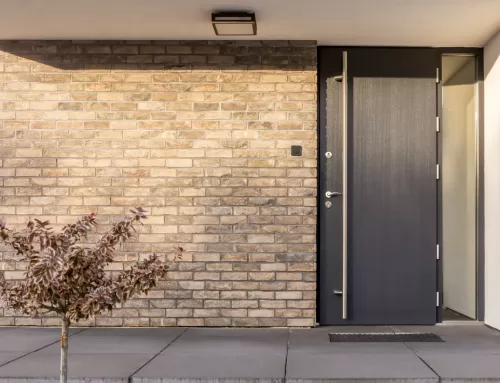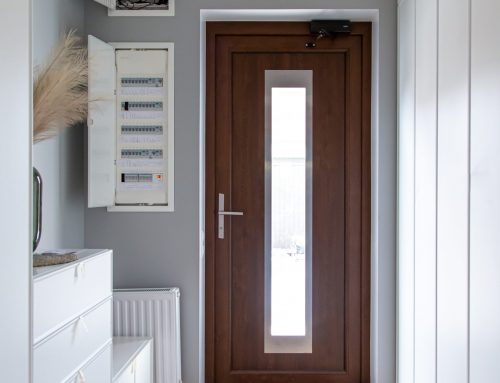As the temperature drops, you may notice a chill creeping through your external doors, making your home feel uncomfortable and increasing your heating costs. Draught-proofing your doors is one of the most effective ways to combat this issue, improving your home’s energy efficiency and comfort. By sealing gaps and preventing cold air from entering, you can ensure your home stays warm and cosy without overworking your heating system.
Why Draught-Proofing Your External Doors is Essential
Draughts around external doors are a common problem, especially during the colder months. They occur when cold air enters through gaps around the door or its frame and warm air escapes. This not only makes your home less comfortable but also increases your energy consumption, as your heating system has to work harder to maintain a comfortable temperature.
By draught-proofing your doors, you can lower your heating bills and reduce your environmental impact. Sealing draughts is an affordable, straightforward way to enhance your home’s energy efficiency.
Identifying Draughts Around Your External Doors
Before you can begin draught-proofing your external doors, it’s essential to pinpoint where the draughts are coming from. You can perform a simple draught test to identify problem areas:
- The Candle Test: Light a candle and hold it near the edges of the door. If the flame flickers, a draught is present.
- Hand Test: Run your hand around the edges of the door frame. If you feel a noticeable temperature difference, there’s likely a draught.
- Paper Test: Place a piece of paper between the door and the frame. If you can easily pull it out, the door is not sealing properly.
Once you’ve identified where the draughts are coming from, you can apply the appropriate solutions.
Key Methods for Draught-Proofing Your External Doors
Draught-proofing involves sealing the gaps around your external doors using a variety of products. Below, we’ll break down the most effective draught-proofing methods:
1. Seal the Perimeter with Weatherstripping
The first and most important step in draught-proofing your door is sealing the gaps around the perimeter. Weatherstripping is one of the most effective ways to prevent air from entering through the sides, top, and bottom of the door.
Types of Weatherstripping:
- Self-Adhesive Strips: Rubber, foam, or brush strips are commonly used for sealing gaps. Choose the type based on the gap size and the level of sealing required.
- Acoustic Weatherstripping: If your home is on a busy road or you want to reduce external noise as well as draughts, consider weatherstrips that incorporate an acoustic seal for added soundproofing.
How to Apply Weatherstripping:
- Clean the Surface: Before applying weatherstripping, clean the door frame and the door itself to ensure proper adhesion.
- Measure and Cut: Measure the length of the door frame, then cut the weatherstripping to size.
- Apply the Strips: Peel the adhesive backing and press the weatherstripping firmly along the edges of the door frame.
Using weatherstripping along the top and sides of your external door will create a tight seal that blocks draughts effectively.
2. Address the Threshold with a Door Sweep
Another area where draughts commonly enter is beneath the door. To seal this gap, install a door sweep at the bottom of the door.
Types of Door Sweeps:
- Brush Strips: These are ideal for uneven floors and will create a flexible seal at the bottom of the door.
- Hinged Flap Draught Excluders: These flaps can be adjusted to the height of the floor, effectively sealing larger gaps.
- Compression Threshold Strips: These strips compress when the door is closed, providing a tight seal.
How to Install a Door Sweep:
- Measure the Door: Measure the width of the door to ensure the sweep fits properly.
- Attach the Sweep: For brush strips, you can simply attach them to the door’s underside using adhesive or screws. For hinged or compression seals, follow the manufacturer’s instructions for installation.
By sealing the bottom of the door, you prevent cold air from seeping in, creating a more energy-efficient home.
3. Seal the Letterbox and Keyhole
Letterboxes and keyholes are often overlooked but can be a significant source of draughts. Sealing these gaps will help prevent cold air from entering through these small openings.
Letterbox Draught Excluders:
Install a draught excluder with brush strips around the letterbox to block cold air from entering. These excluders can be fitted directly to the inside of the letterbox, sealing the gap.
Keyhole Covers:
A simple keyhole cover can be used to block any draughts coming through the keyhole. These covers are typically made of plastic or metal and are easily attached to the door with adhesive or screws.
4. Additional Draught-Proofing Tips
To ensure your external door is fully draught-proofed, consider these additional tips:
- Layer Multiple Solutions: For the best results, combine multiple draught-proofing methods, such as using weatherstripping along the door frame alongside a door sweep and letterbox seals.
- Inspect for Other Gaps: Check the door frame, hinges, and the surrounding brickwork for any additional gaps. Draughts can enter through these areas, so it’s essential to address them as well.
- Use Caulk or Silicone Sealant: If you notice any small gaps between the door frame and the surrounding wall, use caulk or silicone sealant to fill them in. This will create an airtight barrier and prevent draughts.
- Consider a New Door: If your external door is old or damaged, it may be time to invest in a new, energy-efficient door. Modern doors come with better insulation, which can significantly reduce draughts and improve energy efficiency.
Step-by-Step Guide to Draught-Proofing Your External Doors
Follow these simple steps to draught-proof your external doors effectively:
Step 1: Gather Your Tools and Materials
Make sure you have the following items before you begin:
- Weatherstripping (rubber, foam, or brush strips)
- Door sweep (brush strips, hinged flap, or compression strips)
- Letterbox draught excluder
- Keyhole cover
- Caulk or silicone sealant
- Measuring tape and scissors
- Adhesive or screws
Step 2: Clean the Door and Frame
Clean the door and door frame thoroughly to ensure that the weatherstripping and other seals adhere properly.
Step 3: Apply Weatherstripping to the Perimeter
Measure and cut the weather stripping to fit the top and sides of the door frame. Peel off the adhesive backing and press it firmly along the frame to create a tight seal.
Step 4: Install the Door Sweep
Measure the width of the door and attach a door sweep to the bottom of the door. Follow the manufacturer’s instructions for installation, ensuring that the sweep forms a tight seal.
Step 5: Seal the Letterbox and Keyhole
Install a draught excluder around the letterbox and fit a keyhole cover to block any drafts.
Step 6: Inspect for Additional Gaps
Check the door frame, hinges, and surrounding wall for any other gaps. Use caulk or silicone sealant to fill any small gaps.
Step 7: Maintain Your Draught-Proofing
Regularly check your draught-proofing materials for wear and tear. Reapply or replace weatherstripping and door sweeps as necessary to keep your external doors fully sealed.
When to Call a Professional for Draught-Proofing
While draught-proofing is a manageable DIY task, there are times when professional assistance may be required. If your door has warped or shifted over time, achieving a perfect seal may be difficult. In such cases, you may need to replace the door or have a professional install a new, energy-efficient one.
If you’ve completed draught-proofing but still feel cold air, a professional energy assessor can inspect your home to identify any additional areas of concern.
Conclusion
Draught-proofing your external doors is an essential step in maintaining a comfortable and energy-efficient home. By sealing the gaps around the door frame, installing a door sweep, and addressing draughts from letterboxes and keyholes, you can effectively block cold air from entering your home. These simple, cost-effective solutions will help you save on heating costs while creating a warmer, more comfortable living space. Welsh Doors provides bespoke and reliable doors. Contact us for more information on how we can help make sure you are taking the right steps with fire doors and general doors.




